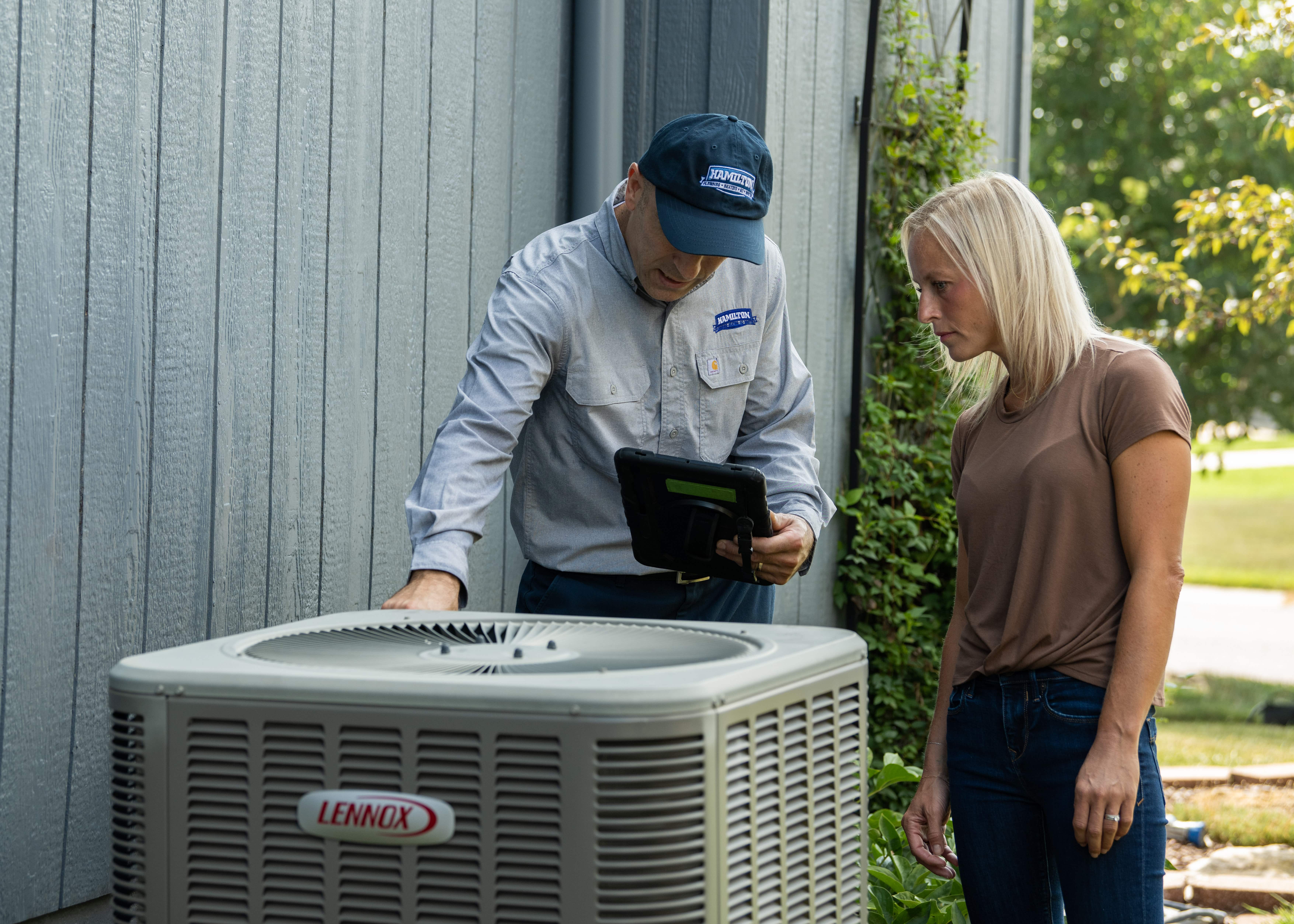Air Conditioning Replacement Kansas City, MO & KS

Kansas City Air Conditioner Replacement
Hamilton Plumbing, Heating, A/C & Rooter offers air conditioning replacement to residents in the greater Kansas City area. Homeowners may need their air conditioner replaced for a variety of reasons: the system is old, experiencing frequent breakdowns, and is no longer meeting the household’s cooling needs. A new system could help significantly lower usage costs and frequency of repairs, while increasing efficiency, comfort, and indoor air quality.
If you’re ready to replace your old AC system with a newer and more efficient one, here is what you can expect during the installation process.
Get Your AC Replacement!
913-227-4943
Home Visit
Once you’ve scheduled an appointment, Hamilton HVAC technician will come to your home and take a look at your current system. He will assess the size and model of the current AC and make recommendations for a new system. Our technicians are trained to install AC models from the top brands in the country, including American Standard, Carrier, Goodman, Trane, Rheem, Lennox, York, Ruud, Amana, Heil, and Bryant.
The technician will explain the various features and benefits of the recommended system and guide homeowners through the decision-making process. Once you’ve chosen a new AC system, we will order the system, schedule delivery, and set an installation date.
You’ll need to pay for the new system and agree to the HVAC removal and installation cost.
Preparation
A key step before installation is the removal of the old unit. We will prepare the space for removal and installation and ensure everything is ready. Once the old unit has been removed, installation of the new unit will be done within one day.
Air Conditioner Replacement
Air conditioner replacement begins with setting up the outdoor unit. First, our HVAC technician will secure the unit to the ground. Next, he will install the indoor cabinet, the refrigerant tubing, and the electrical wires. Then, our Hamilton technician will check to make sure the air ducts, air vents, and registers are good to go. Finally, the unit will be plugged into a power outlet.
Testing
Once the entire system has been installed, the technician will ensure everything is plugged in correctly and turn on the system. He will review both the internal and external units and check to make sure the indoor temperature matches the thermostat’s temperature setting.
User Education
To ensure the homeowner is ready to use the system, the Hamilton Plumbing, Heating, A/C & Rooter technician will provide key information about how the system works as well as tips for maintaining it and preventing issues.
Final Payment
The homeowner will need to make the final payment for installation and our technician will provide a copy of the receipt for their records.
Why Choose Hamilton
For Kansas City residents, Hamilton Plumbing, Heating, A/C & Rooter is the best choice for air conditioning replacement.
Our team has the expert experience and equipment you need for professional air conditioning installation you can trust. We set the bar for quality and service and back it with guarantees so don’t hesitate to give us a call at 913-227-4943 or schedule your appointment online today!
